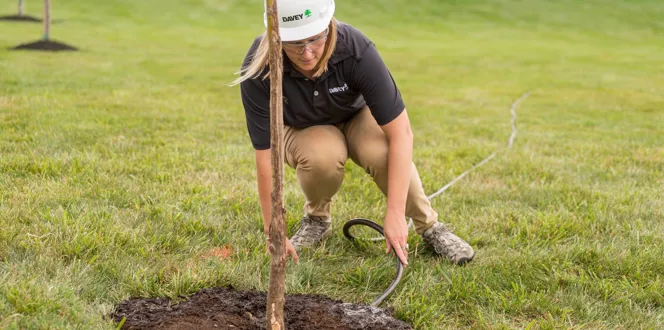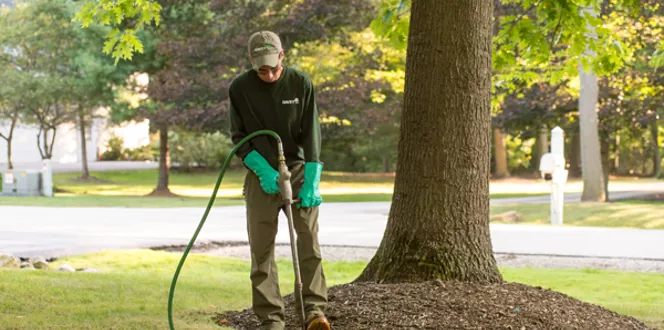Drip. Drop. Drought.
Drought conditions ranging from moderate to exceptional levels have blanketed the Western and Mid-Western U.S.--approximately 50 percent of the country--throughout the past several years. According to the National Oceanic and Atmospheric Administration (NOAA), the average temperature over land and ocean in August 2013 tied as fourth warmest since 1880.
From developing safety hazards to killing and felling weak trees, drought conditions are responsible for devastating tree losses in affected regions. Simply put, when root systems do not have access to a sufficient water source, they fail to keep trees stable and strong enough to ward off pests, diseases and weather-related damage. Even native trees are struggling to survive drought stress.
Worse yet, trees may not recover from drought stress for five or more years--if they even recover at all. For example, Houston's Memorial Park is one of the largest urban parks in the U.S. and was said to have lost more than 50 percent of its trees due to the drought. The total removals, disposals and replacements cost the city millions of dollars.
Because drought is the most recent No. 1 climate-related topic, particularly in Western states such as Nevada, Texas and Colorado, property owners must better understand how the consequences can affect their trees.
Excessive Flooding Follows Prolonged Drought
A majority of Colorado has suffered from drought this year--but the succeeding heavy rains accumulated too quickly to prevent flooding and runoff from damaging residents' trees and landscapes.
Because drought has encouraged wild fires to spread, the resulting reduced or eliminated levels of vegetation or slopes have increased runoff as well. The size and scale of flooding have expanded from the large amounts of retained moisture in such areas.
Although drought kills trees over a long period of time, flooding can deter trees' ability to absorb moisture. In other words, trees can live on stored water for a while, but over-watered trees will succumb--or die--more quickly.
Weakened trees aren't the only objects high waters seemed to reveal in light of Colorado's excessive flooding: An invasive pest has recently crossed several state borders to settle within the depths of ash trees--its first noted appearance in the West.
Drought Stress Increases Trees' Vulnerability
Emerald ash borer has affected approximately 50 million ash trees in 21 states since its initial appearance in the U.S. more than 10 years ago. But Colorado not only marks the fourth state EAB has invaded so far this year but also the westernmost state in which the pest has made an appearance.
Nearly 1.5 million ash trees thrive in Denver alone, which is only a small percentage of a state in which drought conditions affect more than half of the land. Unfortunately, trees suffering existing drought conditions may be less capable of fighting EAB than their healthy counterparts, should such a pest invasion occur.
EAB will be more attracted to drought-stressed trees first. Although not a lot of alignment exists between drought-stressed trees and the impact of EAB, drought stress can increase the likelihood of attack.
Not all EAB-affected trees will fall victim to the pest, but drought stress will increase the likelihood the pest will survive and thrive within the tree. Healthy trees will take longer to completely succumb to EAB--approximately two to four years--while drought-stressed trees will take less time and likely suffer a greater negative impact.
Drought Stress Care You Can Trust
Regardless of the severity of drought affecting your region and your trees, frequent and consistent monitoring can prevent health problems and structural hazards in the future. Consider the following tips for your trees under drought stress and/or excessive flooding:
- Manage the moisture surrounding your trees and their root systems.
- Water your trees where it counts when drought conditions occur.
- Replace nutrients in the soil as necessary.
- If removal is necessary, consider planting estimates to replace the trees you'll lose. Then, learn how to plant the right tree in the right place.





